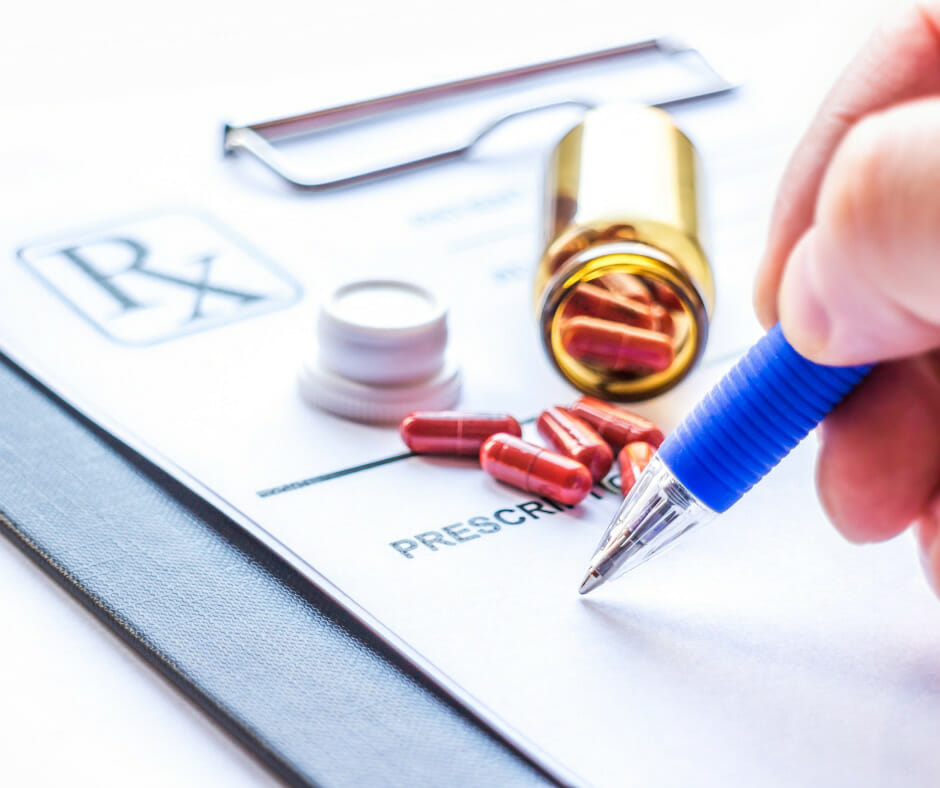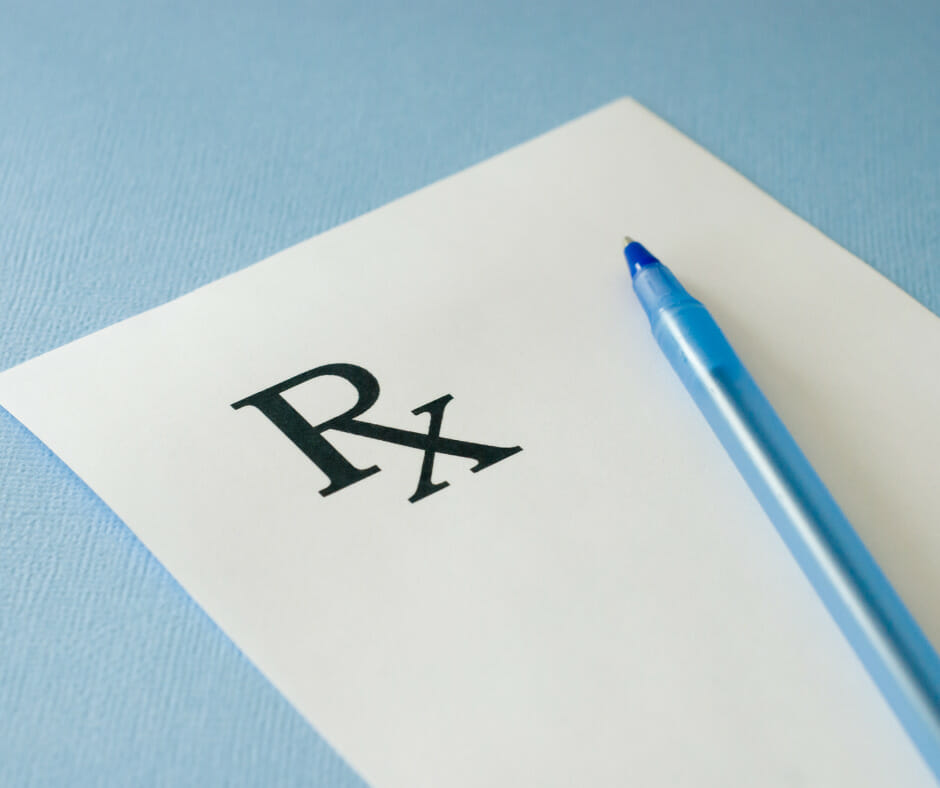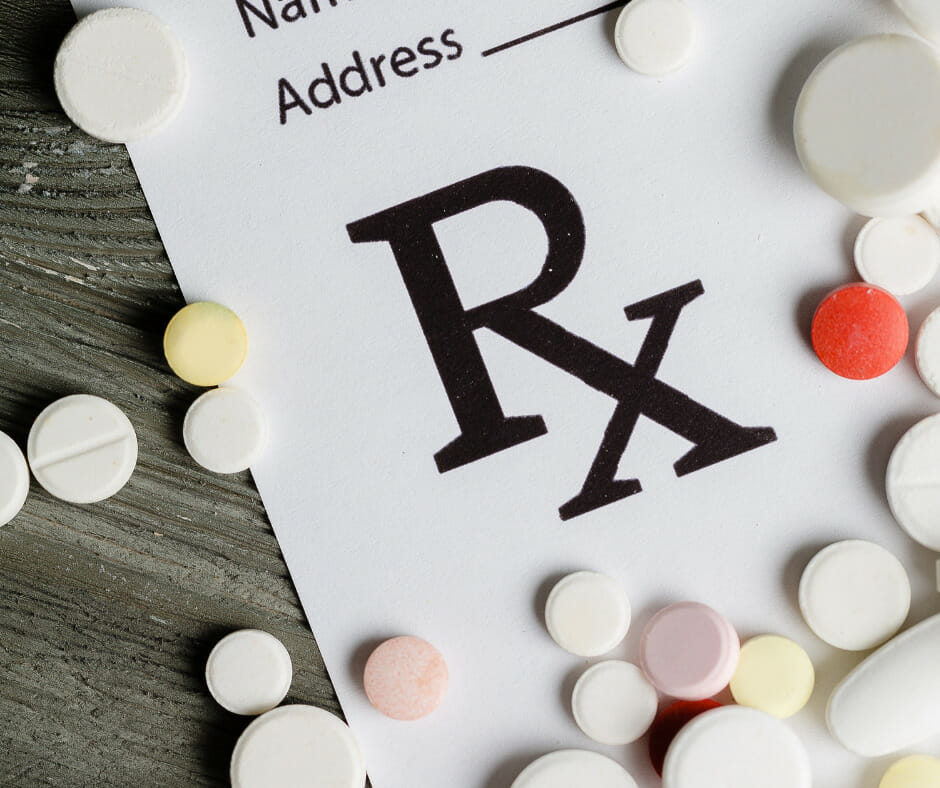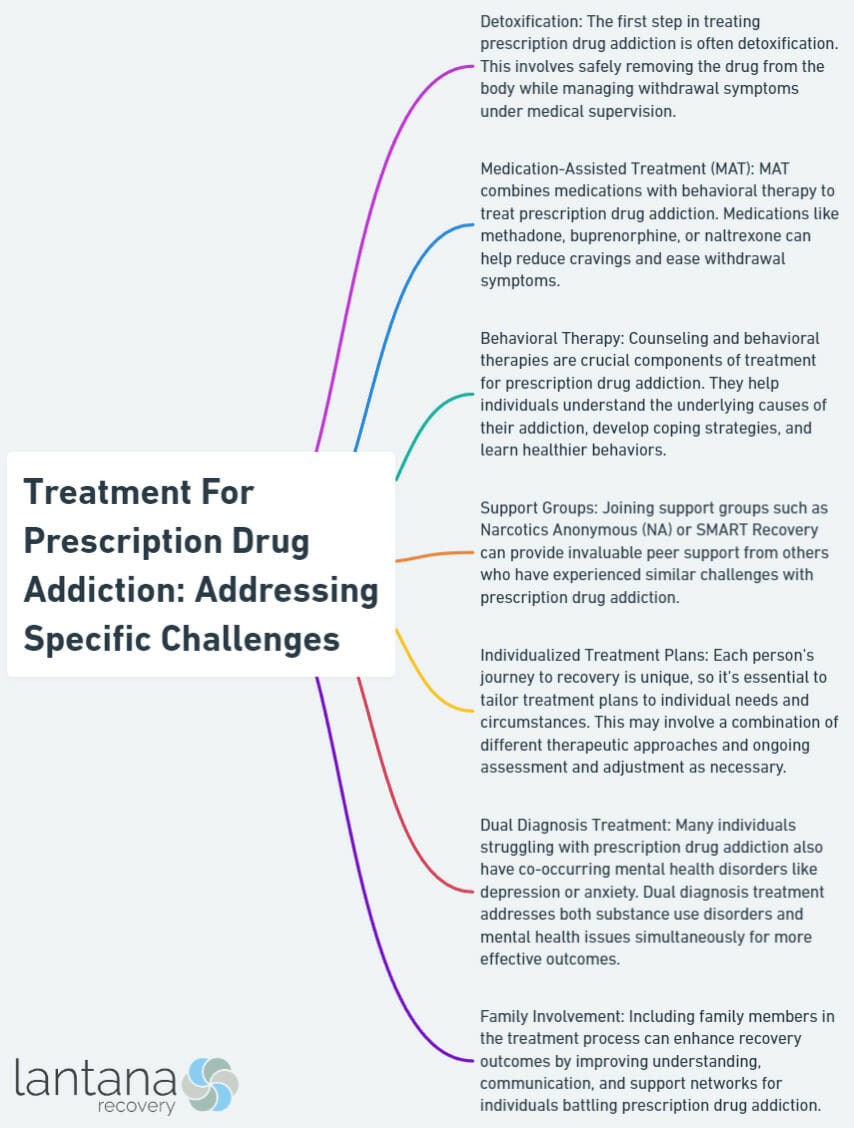Prescription drug addiction is a significant problem that requires specialized treatment approaches to address the specific challenges it presents. Understanding the nature of prescription drug addiction is crucial in developing effective treatment strategies. Addressing the specific challenges associated with prescription drug addiction treatment is vital for successful recovery. These challenges include withdrawal management, treating co-occurring mental health disorders, dealing with polydrug use, and addressing chronic pain and prescription medication.
Evidence-based treatment approaches have proven to be effective in helping individuals overcome prescription drug addiction. Medication-Assisted Treatment (MAT), Cognitive Behavioral Therapy (CBT), Motivational Interviewing (MI), and Contingency Management (CM) are commonly used approaches in combating prescription drug addiction.
In addition to evidence-based treatment, supportive therapies play a critical role in prescription drug addiction treatment. Support groups and peer support, family therapy, and holistic approaches, such as exercise and meditation, provide individuals with additional support and tools for their recovery journey.
Aftercare and relapse prevention are essential components of prescription drug addiction treatment. Continuing care and long-term support help individuals maintain their recovery progress, and relapse prevention strategies equip them with coping skills to avoid relapse.
Addressing prescription drug addiction requires a comprehensive and tailored treatment approach that considers the specific challenges associated with this type of addiction. By utilizing evidence-based treatment approaches, supportive therapies, and emphasizing aftercare and relapse prevention, effective treatment outcomes can be achieved in addressing prescription drug addiction.

Treatment for Prescription Drug Addiction
Prescription drug addiction poses unique challenges that require targeted treatment approaches. In this section, we’ll dive into the world of treating prescription drug addiction, exploring strategies and interventions that address the specific complexities of this issue. We’ll gain a deeper understanding of the underlying factors contributing to addiction, as well as the importance of tailored treatment plans. Join us as we uncover the path to recovery and offer insights into overcoming the obstacles associated with prescription drug addiction.
Understanding Prescription Drug Addiction
Understanding prescription drug addiction is crucial in effectively addressing and treating this issue. Prescription drug addiction refers to the harmful misuse of medications prescribed by healthcare professionals. Anyone can develop an addiction to prescription drugs, regardless of age, gender, or socioeconomic status.
Key Factors to Consider in
- The role of prescription drugs: Prescription drugs are used to treat medical conditions and can be beneficial when used as directed. However, they can also be highly addictive and have potential for abuse.
- Risk factors: Factors that increase the likelihood of developing a prescription drug addiction include personal or family history of substance abuse, untreated mental health disorders, and easy access to prescription medications.
- Physical and psychological dependence: Continued use can lead to tolerance, requiring higher doses for desired effects. This can result in physical dependence, with withdrawal symptoms upon discontinuation. Psychological dependence, characterized by intense cravings and a compulsive need to use the drug, can also develop.
- Commonly abused prescription drugs: Some prescription drugs are more commonly abused than others. Opioids (e.g. oxycodone, hydrocodone) are misused for pain relief and euphoria. Stimulants (e.g. Adderall, Ritalin) are abused for enhanced focus and energy. Benzodiazepines (e.g. Xanax, Valium) are also misused for their sedative and calming effects.
- Consequences of prescription drug addiction: Prescription drug addiction can have devastating consequences on health, relationships, and overall well-being. It can lead to physical and mental health problems, financial difficulties, legal issues, and even overdose.
Understanding prescription drug addiction is the first step towards effective treatment and recovery. By recognizing risk factors, signs of addiction, and the impact on individuals and society, we can work towards prevention and providing appropriate support and treatment for those affected.
True story: John, a successful businessman in his 40s, was prescribed pain medication after a car accident. Initially, he took the medication as prescribed, but over time, he craved it more and started doctor-shopping and buying medications illegally to feed his addiction. It wasn’t until he hit rock bottom and faced the consequences of his addiction that he sought help and began the journey of recovery. This story highlights the importance of understanding prescription drug addiction and the potential risks associated with these medications.

Addressing Specific Challenges of Prescription Drug Addiction Treatment
Addressing the specific challenges of prescription drug addiction treatment takes a multi-faceted approach. From withdrawal management to treating co-occurring mental health disorders, and dealing with polydrug use, to addressing chronic pain and prescription medication, this section tackles the various hurdles that need to be overcome in the journey towards recovery. So, let’s dive in and explore the strategies, interventions, and considerations that come into play when tackling these challenges head-on.
Withdrawal Management
Withdrawal management is an essential aspect of treating prescription drug addiction. It plays a crucial role in providing the necessary support and medical intervention to help individuals safely navigate withdrawal symptoms when they stop using prescription drugs. There are several key points to consider when it comes to withdrawal management:
- Medically supervised detoxification: The process begins by closely monitoring vital signs and administering medications to alleviate symptoms and reduce discomfort.
- Individualized treatment plans: Effective withdrawal management takes into account the specific drugs and dosages involved. Treatment plans are customized to address the unique challenges and needs of each individual.
- Gradual tapering: In some cases, a gradual reduction in medication is recommended to minimize withdrawal symptoms. This approach allows the body to adjust slowly, preventing intense reactions.
- Dual diagnosis treatment: Addressing co-occurring mental health disorders is crucial during withdrawal management. Treating both the addiction and underlying mental health conditions increases the chances of successful recovery.
- Emotional support: In addition to medical supervision, emotional support is essential. Therapists and counselors offer empathy, reassurance, and guidance to help individuals cope with the emotional and psychological challenges they may face.
Withdrawal management has long been recognized as a vital component of addiction treatment. Medical professionals and specialists have continuously improved techniques for managing withdrawal symptoms. Evidence-based practices and comprehensive treatment programs provide the best chances of successful recovery. With personalized plans and both medical and emotional support, withdrawal management plays a pivotal role in helping individuals overcome prescription drug addiction and regain control of their lives.
Treating Co-occurring Mental Health Disorders
Treating co-occurring mental health disorders, such as anxiety, depression, or bipolar disorder, is crucial for addressing prescription drug addiction. Successful recovery requires treating both addiction and underlying mental health issues simultaneously.
Evidence-based treatment approaches, like medication-assisted treatment and Cognitive Behavioral Therapy (CBT), have proven effective for co-occurring mental health disorders. Medication-assisted treatment combines therapy with medicines to manage addiction and mental health symptoms. CBT helps individuals identify negative thought patterns and develop healthier coping mechanisms, addressing both addiction-related behaviors and mental health symptoms.
Motivational interviewing is another technique that helps individuals explore and resolve ambivalence about addiction and mental health issues, aiming to enhance motivation for change and promote self-efficacy.
Additionally, contingency management can be used as a positive reinforcement approach to reward individuals for achieving specific goals in addiction recovery and mental health management.
Seeking treatment from professionals specializing in dual diagnosis is essential, as they can provide comprehensive care and tailor treatment plans to meet individual needs.
Treating both addiction and mental health disorders is critical for long-term well-being and a fulfilling life.
Dealing with Polydrug Use
Dealing with polydrug use is vital when it comes to treating prescription drug addiction. Polydrug use refers to the use of multiple drugs, such as prescription medications, alcohol, or illicit drugs.
- Recognizing risks: Addressing polydrug use significantly increases the risks and complications of addiction treatment. Combining different substances can lead to unpredictable interactions and intensify adverse effects on both physical and mental health.
- Comprehensive assessment: Dealing with polydrug use necessitates a thorough examination of the individual’s history of drug use. This includes identifying the specific drugs used, frequency, dosage, and any co-occurring mental health disorders.
- Individualized treatment plans: Customized treatment plans are essential to tackle the unique challenges posed by polydrug use. Treatment may involve various modalities and interventions tailored to the specific substances used and the individual’s specific needs.
- Integrated care: Effective management of polydrug use requires collaboration among healthcare providers. Coordinated efforts among addiction specialists, mental health professionals, and primary care providers ensure holistic care and yield the best outcomes for patients.
- Education and relapse prevention: Individuals with polydrug use necessitate comprehensive education about the risks associated with combining substances. Relapse prevention strategies should target specific triggers and patterns of polydrug use.
Dealing with polydrug use entails employing a comprehensive and individualized approach to ensure the safety and success of addiction treatment. By addressing this challenge, patients can receive the necessary support to overcome addiction and improve their overall well-being. One of the ways to prevent relapse after completing a treatment program is to enroll in outpatient drug rehab to continue seeking the support you need on this journey to sobriety.
Addressing Chronic Pain and Prescription Medication
Treating prescription drug addiction while addressing chronic pain and prescription medication requires personalized treatment plans and a collaborative, multidisciplinary approach. It is crucial to consider the unique challenges faced by individuals with chronic pain. Here are some key factors to consider:
- Tailored treatment plans: Develop individualized treatment plans that specifically address addiction and chronic pain. Assess the patient’s medical and psychological history to determine the most suitable course of action.
- Multidisciplinary approach: Collaborate with a healthcare team consisting of addiction specialists, pain management specialists, and mental health practitioners. This approach ensures that all aspects of the patient’s condition are effectively addressed.
- Alternative pain management strategies: Explore various non-opioid alternatives such as physical therapy, acupuncture, and cognitive-behavioral therapy (CBT), as well as non-opioid medications.
- Education and support: Provide patients with comprehensive education on the risks and benefits associated with using prescription medications for pain management. Offer support and guidance in developing healthy coping strategies for managing chronic pain without relying solely on medications.
- Collaborative decision-making: Involve the patient in the decision-making process regarding pain management options. This approach promotes autonomy and takes into account their preferences and concerns.
By adopting a comprehensive and personalized approach, healthcare providers can effectively address chronic pain and prescription medication in the treatment of prescription drug addiction. This approach aims to achieve positive outcomes and enhance the quality of life for individuals with chronic pain.

Evidence-based Treatment Approaches for Prescription Drug Addiction
When it comes to overcoming prescription drug addiction, having evidence-based treatment approaches is crucial. In this section, we’ll explore some powerful methods that have shown promising results. From Medication-Assisted Treatment to the transformative effects of Cognitive Behavioral Therapy, Motivational Interviewing, and Contingency Management, we’ll uncover the strategies that are making a difference in the lives of those struggling with prescription drug addiction. Get ready to dive into the world of proven techniques and discover how they’re addressing the specific challenges of addiction recovery.
Medication-Assisted Treatment
Medication-Assisted Treatment (MAT) is an effective way to treat prescription drug addiction. MAT combines medications with counseling and behavioral therapies to address addiction. This approach improves treatment outcomes and reduces the risk of relapse.
Multiple medications are used in MAT to treat prescription drug addiction. These medications help manage withdrawal symptoms, reduce cravings, and normalize brain functioning. For example, buprenorphine, a partial opioid agonist, relieves withdrawal symptoms and cravings. Naltrexone, an opioid antagonist, blocks the effects of opioids and reduces cravings.
MAT is tailored to individual needs and closely monitored by healthcare professionals. The choice of medication and duration of treatment depend on the substance of abuse.
Research shows that MAT is effective in improving treatment outcomes. It reduces opioid use, overdose risk, and improves retention in treatment programs. “Among opioid-dependent patients, ED-initiated buprenorphine treatment significantly increased engagement in addiction treatment, reduced self-reported illicit opioid use, and decreased use of inpatient addiction treatment services.” (Emergency Department–Initiated Buprenorphine/Naloxone Treatment for Opioid Dependence, D’Onofrio et al., 2015)
MAT offers hope and a pathway to recovery for individuals struggling with prescription drug addiction. By combining medications with counseling and support, individuals can overcome addiction and reclaim their lives.
Cognitive Behavioral Therapy
Cognitive Behavioral Therapy (CBT) is a treatment approach for prescription drug addiction that focuses on changing behaviors and thoughts. In CBT, individuals work with a therapist to identify the underlying causes of addiction and develop effective coping strategies.
During CBT, individuals learn to recognize triggers that lead to drug use and develop skills to manage cravings and avoid relapse. They also learn to challenge negative thought patterns and replace them with more positive and healthy thoughts.
CBT helps individuals understand the connection between thoughts, feelings, and behaviors. By identifying and changing negative thought patterns, individuals can develop healthier behaviors and achieve long-term recovery from prescription drug addiction.
Studies have shown that CBT is highly effective in treating prescription drug addiction. Research indicates that CBT can significantly reduce drug use and improve treatment outcomes. In fact, a meta-analysis published in the Journal of Consulting and Clinical Psychology 2019 by Molly Magill and her team found that CBT was associated with a 45% reduction in drug use compared to no treatment or treatment as usual.
CBT is often combined with other treatment approaches, such as medication-assisted treatment or support groups, for a comprehensive approach to addiction recovery. However, it is important to consider individual needs when selecting a treatment approach for prescription drug addiction.
Motivational Interviewing
Motivational interviewing is an indispensable approach in addressing prescription drug addiction. Incorporating empathy, collaboration, and support, it assists individuals in discovering their own motivation for change.
Throughout a session, the therapist actively listens to the client’s perspective and goals, allowing them to express any ambivalence towards change and working towards its resolution. The therapist also encourages self-reflection and aids the client in exploring both the positive and negative aspects of their drug use.
The primary focus is on boosting the client’s motivation and commitment to specific goals. To increase self-awareness, the therapist provides information and feedback, utilizing open-ended questions and reflections as a means of promoting exploration.
Motivational interviewing proves effective in addressing prescription drug addiction by acknowledging the issue’s complexity. It recognizes that individuals may experience mixed feelings about stopping their medication and provides assistance in regaining control over their drug use.
Contingency Management
Contingency management, also known as CM, is a highly effective approach for treating individuals struggling with prescription drug addiction. Its main aim is to utilize positive reinforcement techniques to motivate and encourage individuals to abstain from drug use and engage in recovery-oriented behaviors. Let’s delve into the key aspects of contingency management to gain a better understanding:
- Reinforcement System: Contingency management incorporates a reinforcement system that utilizes rewards as an incentive to reinforce desired behaviors. These rewards can take various forms, such as providing vouchers that can be exchanged for goods or services, or offering monetary rewards for meeting specific treatment goals.
- Target Behaviors: The primary focus of contingency management is to promote behaviors that support recovery. This involves encouraging individuals to attend therapy sessions, submit drug-free urine samples, and actively participate in various treatment activities that aid in their recovery process.
- Scheduled Rewards: The rewards in contingency management are given on a predetermined schedule, which is based on the frequency and success of the targeted behaviors. By providing immediate reinforcement, individuals are motivated and become more engaged in their treatment.
- Positive Reinforcement: It is important to note that the rewards provided in contingency management are positive and desirable. This form of reinforcement helps strengthen the desired behaviors, leading to increased treatment compliance and a reduction in drug use.
- Integration with Other Treatments: Contingency management can be seamlessly integrated with other evidence-based treatments, such as medication-assisted treatment or cognitive behavioral therapy. This integration serves to enhance the overall effectiveness of these treatments, increasing the chances of successful long-term recovery.
Incorporating contingency management into a comprehensive treatment plan for prescription drug addiction can significantly improve outcomes and increase the likelihood of long-term recovery. By providing immediate rewards for positive behaviors, individuals are encouraged to remain motivated and engaged in their recovery journey.
If you or someone you know is struggling with prescription drug addiction, it is highly recommended to explore the benefits of incorporating contingency management as part of a comprehensive treatment approach.

Supportive Therapies for Prescription Drug Addiction Treatment
In the world of prescription drug addiction treatment, supportive therapies play a pivotal role. From support groups and peer support to family therapy and holistic approaches, these therapies offer unique avenues for overcoming the challenges posed by addiction. Let’s delve into the diverse range of supportive therapies that contribute to the effective treatment of prescription drug addiction, exploring the transformative power they hold in aiding recovery.
Support Groups and Peer Support
Support groups and peer support are essential when it comes to treating prescription drug addiction. These valuable resources create a safe and understanding environment where individuals can connect with others who are going through similar experiences. Let’s explore the important aspects of support groups and peer support:
- Sharing Experiences and Stories: Support groups provide a platform for individuals to openly share their struggles, successes, and setbacks with others who can empathize and understand their journey towards recovery.
- Mutual Support and Encouragement: Within support groups, a network of members exists to offer empathy, understanding, and encouragement. This support system boosts motivation and fosters a sense of belonging, which is crucial for recovery.
- Education and Information: Support groups go beyond just providing a listening ear. They also offer valuable education and information about addiction, recovery, and coping strategies. This knowledge empowers individuals to make informed decisions and develop healthier habits.
- Accountability and Motivation: Support groups help individuals stay accountable to their recovery goals through regular check-ins and ongoing support. This dedication enhances motivation and strengthens their commitment to sobriety.
- Learning New Coping Skills: Support groups provide a unique opportunity for individuals to learn effective coping strategies and skills from others who have faced similar challenges. This exchange cultivates resilience and improves overall well-being.
Research clearly indicates that participating in support groups or peer support programs significantly increases the likelihood of successful recovery, reports Tracy and Wallace in Benefits of peer support groups in the treatment of addiction from the journal Substance abuse and Rehabilitation. Therefore, taking advantage of these supportive resources is highly recommended for individuals struggling with prescription drug addiction.
Family Therapy
Family therapy is a vital component in the treatment of prescription drug addiction. It acknowledges the profound impact that addiction has on both the individual struggling with substance dependency and their family members. The primary objective of family therapy is to enhance communication, restore trust, and foster healthy relationships within the family unit. By actively involving the family in the treatment process, a supportive environment is created to facilitate long-lasting recovery.
Through family therapy, each member has the opportunity to express their feelings and concerns while gaining insights into how their behaviors may contribute to the addiction cycle. By fostering open and honest communication, therapy sessions can assist in repairing relationships, establishing boundaries, and developing effective coping strategies that benefit both the individual and the entire family.
Extensive research demonstrates that family therapy significantly enhances addiction treatment outcomes. It not only improves the likelihood of successful recovery for the individual but also contributes to the overall well-being of the family members involved.
If you or someone you know is grappling with prescription drug addiction, it is highly recommended to incorporate family therapy into the treatment plan. This approach offers invaluable support, promotes healing, and contributes to a healthier and more fulfilling family dynamic.
One inspiring success story that exemplifies the efficacy of family therapy is the case of Sarah. Sarah faced a severe addiction to prescription opioids, which strained her relationships with her husband and children. However, through therapy, Sarah and her family were able to address the underlying issues, rebuild trust, and strengthen their bond.
During therapy sessions, Sarah’s husband and children openly shared their concerns, enabling Sarah to comprehend the profound impact her addiction had on their lives. With the guidance of a skilled family therapist, they learned effective communication techniques and coping strategies as a unified family unit.
As Sarah progressed in her recovery, her family actively participated in aftercare and continued therapy sessions. This ongoing involvement provided crucial support for Sarah’s journey and facilitated healing and growth within the family. Today, Sarah and her family enjoy a stronger bond and remain committed to a healthy, drug-free lifestyle.
Holistic Approaches
Holistic approaches for drug addiction consider the physical, mental, and emotional well-being of individuals. Addiction is complex and requires a comprehensive treatment plan. Here are key aspects of holistic approaches:
- Mind-body connection: Enhancing the connection between the mind and body is important. Techniques like meditation, yoga, and mindfulness develop self-awareness and reduce stress.
- Nutrition and exercise: A healthy lifestyle supports recovery. Proper nutrition and regular exercise boost energy levels, improve mood, and contribute to overall well-being.
- Alternative therapies: Integrating therapies like acupuncture, massage therapy, and art therapy reduces stress and provides new ways to express and manage emotions.
- Spirituality: For some, spirituality is important in recovery. Activities like meditation, prayer, or attending support groups with spiritual principles can be included.
- Emotional support: Emotional support is crucial throughout the recovery process. This can include individual counseling, group therapy, and family therapy to address emotional issues and improve relationships.
A holistic approach focuses on overcoming addiction and improving overall well-being. Remember, personalized and flexible approaches may be necessary as different individuals respond differently to treatment.
Aftercare and Relapse Prevention
After successfully completing an addiction treatment program, the journey towards recovery continues with the crucial phase of aftercare and relapse prevention. This section dives into the two significant aspects: continuing care and long-term support, which provide vital resources for maintaining sobriety, and the implementation of effective relapse prevention strategies. By emphasizing the importance of ongoing support and equipping individuals with the necessary tools, this section is dedicated to ensuring a successful, long-lasting recovery.
Continuing Care and Long-term Support
Continuing care and long-term support are crucial elements in the treatment of prescription drug addiction. These key considerations play a vital role:
- Regular therapy sessions: Consistent therapy, whether in individual or group settings, offers ongoing support, aids in maintaining recovery, and addresses underlying issues.
- Medication management: Healthcare providers closely monitor prescribed medications to prevent misuse or relapse, especially for individuals with ongoing medical conditions.
- Support groups: Engaging in support groups fosters a sense of community, understanding, and encouragement. It allows individuals to share experiences, discuss challenges, and learn from others who have encountered similar struggles.
- Educational resources: Access to educational resources provides valuable information on addiction, strategies for preventing relapse, coping mechanisms, and making healthy lifestyle choices.
- Recovery maintenance plan: Collaborating with healthcare professionals to develop a personalized recovery maintenance plan ensures individuals remain on track with their sobriety goals. This plan encompasses ongoing therapy, participation in support groups, adopting healthy habits, and learning stress management techniques.
It is important to recognize that recovery is a lifelong journey. Ongoing support is critical for sustaining sobriety, enhancing overall well-being, and promoting proficiency.
Statistics from a study published in the Journal of American Medical Association, reveal that approximately 40-60% of individuals with substance use disorders experience relapse. The study further revealed that these numbers are comparable to the treatment of other chronic diseases like Hypertension and Asthma. This underscores the significance of long-term support in addiction recovery.
Relapse Prevention Strategies
Relapse prevention strategies are crucial in treating prescription drug addiction. These strategies help individuals in recovery maintain sobriety and prevent drug use. Here are effective relapse prevention strategies:
- Create a strong support system: Surround yourself with supportive individuals who understand your struggles. Support groups and peer support programs provide encouragement and accountability.
- Develop coping mechanisms: Learn healthy ways to cope with stress, triggers, and cravings. Practice mindfulness techniques, engage in physical exercise, or seek therapy to address underlying emotional issues.
- Identify and avoid triggers: Recognize situations, places, or people that may tempt drug use. Avoid these triggers or develop strategies to cope with them to reduce the likelihood of relapse.
- Regularly attend therapy sessions: Continue therapy, such as cognitive-behavioral therapy or motivational interviewing, to reinforce positive behaviors and provide ongoing support in preventing relapse.
- Stick to a structured routine: Establish a daily routine with healthy habits like regular exercise and consistent sleep patterns. This promotes stability and reduces the risk of relapse.
Sarah, a recovering prescription drug addict, found joining a support group and building connections with others in recovery crucial for relapse prevention. She attended weekly meetings and developed close friendships with individuals who understood her struggles. Whenever she faced challenges or triggers, she reached out to her support system for guidance and encouragement. Through their support and her commitment to therapy, Sarah successfully maintained sobriety and built a fulfilling life in recovery.

Frequently Asked Questions
What are the specific challenges in treating prescription drug addiction?
Treating prescription drug addiction can be challenging due to various factors such as genetic and environmental influences, complex treatment systems, and stigma surrounding substance use disorders. These challenges can impact access to care, coordination between agencies, and individuals’ readiness to change their behavior.
How can treatment for prescription drug addiction improve birth outcomes?
Treatment for prescription drug addiction, when combined with counseling and therapy, has been shown to improve birth outcomes for pregnant women with substance use disorders. It can help reduce the risk of complications and adverse effects on the fetus, promoting healthier pregnancies and births.
What is the impact of capacity limitations in hospitals on treating prescription drug addiction?
Limited capacity in hospitals, especially in rural areas, can pose challenges in providing inpatient and residential treatment for prescription drug addiction. This can lead to longer wait times for individuals seeking treatment and recovery support services, delaying their access to necessary care.
How does treatment for prescription drug addiction decrease illicit opiate use?
Treatment for prescription drug addiction, including the use of FDA-approved medications, combined with counseling and therapy, has been shown to reduce illicit opiate use. These medications help relieve withdrawal symptoms, cravings, and normalize brain chemistry, reducing the potential for relapse and promoting recovery.
What role do genetic factors play in prescription drug addiction and its treatment?
Genetic factors can influence an individual’s vulnerability to prescription drug addiction. Understanding these genetic factors can help tailor treatment approaches to address specific needs and increase the effectiveness of interventions.
What are the transportation barriers faced in rural communities for accessing treatment for prescription drug addiction?
Rural communities often face transportation barriers, such as inadequate or nonexistent public transportation systems, making it difficult for individuals to reach treatment facilities. This can hinder access to necessary care, including counseling, medication, and other support services. However, telemedicine addiction treatment services have proven efficient in overcoming these barriers for addiction treatment.









